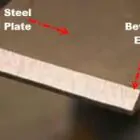In the food and drinks industry, the laws are very strict. This is true whether you are making beer or cheese. So, it is of the utmost importance that hygiene rules are followed to the letter. So that germs and bacteria can’t live there, welded joints must be as smooth as possible. And, most of all, must not have any holes in them. This is why the food and drink industry uses stainless steel, which is resistant to corrosion and easy to weld. In terms of hygiene, the surface structure, hardness, heat resistance, and cleanability of the material all meet the legal requirements. Come let us know about the TIG welding in the Food Industry.
TIG welding is also needed here. As the very stable arc of the TIG welding process makes sure that the weld seams are truly smooth. And non-porous. Also important is the fact that seams made with TIG are very hard to break. When TIG welding on stainless steel in the food and drink industry, there are some things to keep in mind. For example, temper colouring should be avoided at all costs.
How does TIG welding change the colour of the temper?
A thin layer of oxide forms on stainless steel, which is also called a “passive layer”. This is a film that protects the surface and stops corrosion. But welding can damage this protective film if there is no oxidation protection (shielding gas). Because of this, burnt, or damaged, oxide layers are made, which show up in the colour of the temper.
In this case, the damage to the sensitive passive layer can cause corrosion in the affected areas. In turn, the rough surface caused by the corrosion gives germs and bacteria a place to live. When TIG welding on stainless steel, it’s very important to pay close attention to how fast the gas flows. And how long the gas stays on the surface of the weld seam after the flow stops.
Protecting the sensitive oxide layer is important for all TIG-joined stainless steel sheets, especially in the food and drink industry. But for root passes, especially in the construction of containers and pipelines, both the top of the weld seam and the bottom of the root must be protected in the right way. In this case, forming gas is used, which is like shielding gas from the welding torch on the surface of the weld seam.
Forming is used to build pipelines and containers.
Forming is an important part of the food and drink industry because it keeps the root from rusting on the bottom. The forming gases, such as nitrogen (N2), argon (Ar), or mixtures of argon and hydrogen (H2), push out the oxygen in the air in the welding area, just like the shielding gas from the welding torch on the top of the root. During welding, the shape of the underside of the root is also improved because it is made much smoother and is almost perfect, which saves a lot of work. This makes sure that the insides of pipes, containers, and storage containers, like those used in breweries, are also perfectly made and very clean.
The Pipeline
When building a pipeline, the forming gases are often flushed through the whole piece of work or through the part of the circumferential weld that is being welded. For this, special silicone devices called “forming gas devices” are used to almost completely seal off the pipe so that gas can fill the space.
In the same way, trailing gas nozzles are used to flush the gas around the underside of the weld seam without having to fill the whole workpiece. These are used to make containers or pipes with larger diameters. Even after the welding is done, the forming process continues until the original material has cooled to less than 200 °C (varies depending on the material).
Even though this was done to improve the welding process, any weld reinforcements that are still on the bottom of the root should usually be ground down to the same level as the sheet metal. But because narrow pipes are hard to get to, this kind of repair is often not possible. Even here, the process of forming is the best way to help make surfaces that are as clean as possible. Some parts that didn’t get shaped during welding can’t be fixed at all, so they have to be thrown away.
To sum up, forming is a must in the food and drink industry when TIG welding. At the end of the day, it would be impossible to make ultra-pure seams and stainless steel surfaces without forming.
TIG welding that is done automatically in the food and drink business.
Quality standards for the food and drink industry clearly apply to mechanized TIG welding as well. It is very important to have ultra-clean surfaces and clean, smooth seam structures. The circumferential welds must also be perfect. And it should be the same way every time a machine makes it. There are two main types of automated welding systems. One, in which the welding torch moves around the part. Other in which the torch stays still and the part turns.





